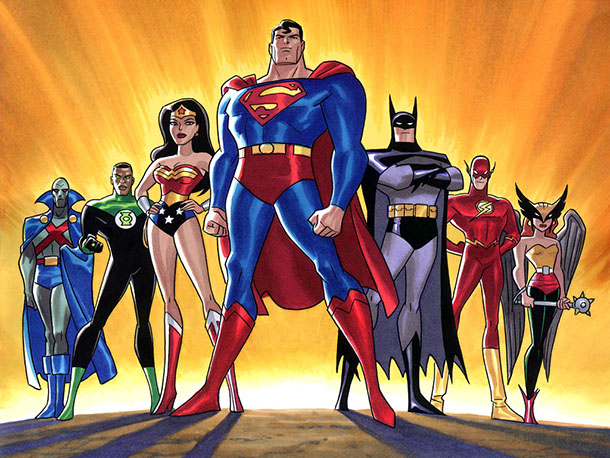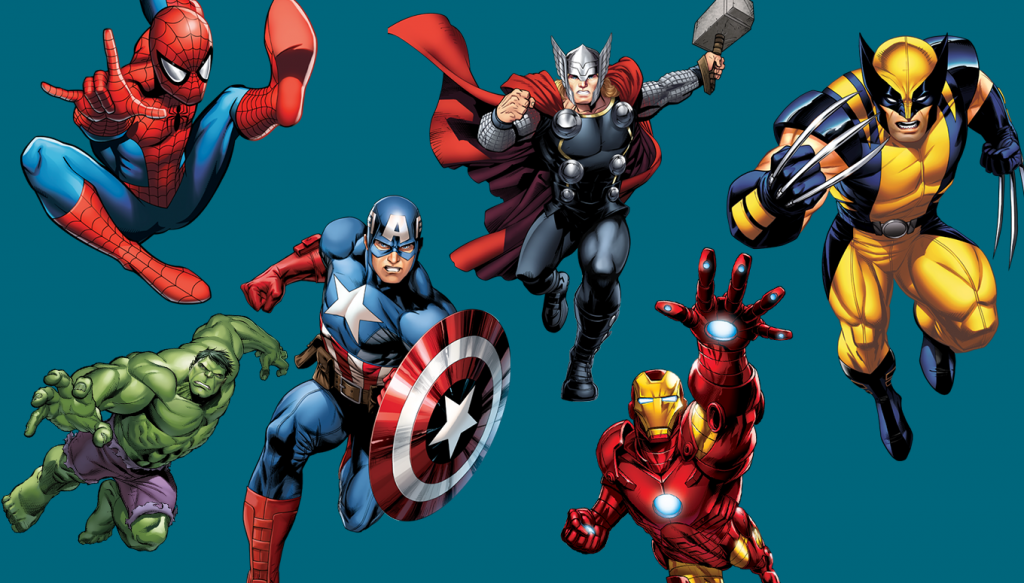A superhero (English Superhero) is a fictional character endowed with extraordinary physical abilities (superpowers), which he directs to perform feats in the name of the common good. After the debut of Superman in 1938, the idea of the superhero – from short, episodic adventure stories to multi-year and multi-series sagas – became dominant in American comics, from which it later spread to other media. A female superhero is sometimes called a superheroine.
According to most definitions, characters do not necessarily have to possess superhuman strength to be called superheroes, although the latter also uses the term masked hero, which refers to characters who are not endowed with superpowers but otherwise conform to the notion of superheroes.
History
The term “superhero” originated in 1917. The 1903 play “Purple First Flower” and its sequel popularized the idea of a masked avenger. Pulp magazine characters in masks and costumes such as Zorro (1919) and comic book characters such as the Phantom (1936) began to appear soon after. So did non-costumed characters with superpowers, Papaya (1929), and Philip Wiley’s protagonist Hugo Denner (1930).
Superheroes most often appear in comic books, and superhero stories are the predominant form of American comics. After their success in print, superheroes appeared on radio, TV series, novels, movies, and other media. Most superheroes that appear in other media are adapted from comics, but there are exceptions.
Marvel Comics and DC Comics share US trademark ownership of the words “superhero” and “superheroes,” and these two companies own the vast majority of the world’s most famous and influential superheroes. Of the “Significant Seven” selected by The Comic Book in America: An Illustrated History (1989), Marvel includes Spider-Man and Captain America, and DC includes Superman, Batman, Wonder Woman, Shazam.
However, there are significant characters owned by other publications, especially since the 1990s, when Image Comics and other companies developed, allowing creators to retain branding and editorial control over their characters. Hellboy and Spawn are among the most successful, owned by hero creators.

Common features
Most superheroes have the following traits:
Unusual powers and abilities, important skills and the latest equipment. Although superhero powers vary widely, superhuman strength, the ability to fly, and heightened senses are the most popular. Some superheroes do not possess superhuman powers, but have achieved mastery in martial arts and scientific activities. Others possess special weapons or technology, such as Iron Man’s power suit. Many characters augment their natural powers with a special weapon or device (such as Spider-Man’s web, Wolverine’s adamant claws, Wolverine’s club, Thor’s hammer, etc.
Strong moral principles, including the willingness to risk one’s life for the sake of good without expecting a reward. Such principles often include a refusal or strong reluctance to kill or use lethal weapons.
Each superhero has some kind of motivation in the fight against crime: such as a sense of responsibility (Spider-Man), a formal vocation (Wonder Woman), a personal vendetta against criminals (Batman) or a strong belief in justice (Superman).
Patronus of friends and family of a superhero, protecting from enemies; many superheroes have a confidant (usually a friend or relative sworn to secrecy), such as Batman’s butler Alfred Pennyworth.
A superhero costume helps make him recognizable to the public. The costumes are often colorful to enhance the visual appeal of the character and often include the name and theme of the superhero. For example, Goblin resembles a red devil, Captain America’s costume resembles the American flag, Batman resembles a big bat, and Spider-Man’s costume has a web pattern. Several superheroes, such as Superman, Batman, and Robin, wear breeches over these suits. This is often derided as the idea of superheroes wearing underwear over their clothes. Many features of superhero costumes are often repeated, including:
The superheroes, who keep their names a secret, often wear masks that vary from the domino masks of Green Lantern to the full-face masks of Spider-Man and Black Panther. The most common are masks that cover the upper part of the face, leaving the mouth and chin visible, like Batman and Captain America. This provides both believable camouflage and recognition of facial expressions. A notable exception is Clark Kent, who wears nothing on his face when fighting crime as Superman, but uses large glasses in civilian life. Some characters wear helmets like Magneto.
A symbol, such as a stylized letter or visual insignia, usually on the chest. Examples include Superman’s “S”, Batman’s bat emblem, and Spider-Man’s spider emblem. They often also wear a common symbol that indicates their group or league, like the “4” on the Fantastic Four costumes or the “X” on the X-Men costumes.
Tight clothing, the so-called leotard. Such clothing shows the hero’s athletic build and sex appeal and provides a simple design for artists to reproduce.
Although the vast majority of superheroes don’t wear a cape, this wardrobe item is still closely associated with them, apparently because the two most widely known, Batman and Superman, wear capes. Basically, the police in Gotham, Batman’s city, use the word “cloak” as shorthand for all superheroes and masked heroes.
While most superhero costumes only hide the hero’s personality and create a recognizable look, costume parts (or the costume itself) are useful in completing a task. Batman’s belt with various gadgets in it helps the hero immensely. Iron Man’s armor, in particular, protects him and gives him technological advantages, while the Fantastic Four’s suits are made of unstable molecules that possess the properties of the heroes’ superpowers.
When thematically appropriate, some superheroes dress up as people from different professions or subcultures.
An initial motif or theme that touches on the character’s name, costume, personal belongings, and other aspects of his or her character (so Batman resembles a bat, operates at night, summons his special vehicle that also resembles a bat, the “Batmobile,” and uses several devices with the prefix “bet”).

Batpod of the Dark Knight
The supporting cast of regular characters includes the hero’s friends, colleagues, and loved ones who may or may not know about the superhero’s secret identity. The hero’s personal relationships are often complicated by this double life, a common theme in stories of Spider-Man and Batman in particular.
A set of enemies with whom he repeatedly fights. In some cases, superheroes begin by fighting common criminals before supervillains appear in their respective storylines. In many cases, the hero is partly to blame for the emergence of these supervillains (Scorpion was created as the perfect enemy to defeat Spider-Man, and characters in the Batman comics often blame him for creating the villains he fights). Often a superhero has an archenemy who is more problematic than others. It is often a double or the opposite of a superhero.
Material independence (for example, Batman or Iron Man), an occupation that allows minimal prosperity (for example, Superman’s work as a reporter).
A headquarters or base of operations, usually hidden from the general public (such as Batman’s cave).
A backstory that explains the circumstances under which the character discovered his or her abilities, as well as the reasons that led him or her to become a superhero. In many origin stories, there are tragic elements or anomalies that led to the development of the hero’s abilities.
Outside the US
Kamen Rider V3 (Cosplay)
Japan is the only country that comes close to the US in superhero production. The earlier ones wore scarves either in addition to raincoats or as their replacement and helmets instead of masks. Northern Mask, Ultraman, Kamen Rider, Super Sentai (the basis for Power Rangers), Metal Heroes, and Kikaider became popular in Japanese action tokusatsu shows, and the Ninja Science Team of Gatchaman, Kasshan, Guyver, and Sailor Moon are staples of Japanese anime and manga. However, most Japanese superheroes are less durable. While American entertainment companies revamp and retool superheroes in the hopes of keeping them popular for decades, Japanese ones release and introduce superheroes more quickly, usually on an annual basis, to reduce product lines. In addition, Japanese manga is often aimed at female readers and has created such variations as “witch girl” for this audience.
Perhaps the most famous of the Japanese superheroes is Goku from the Dragon Ball series, who is considered by some to be the Japanese equivalent of Superman.
